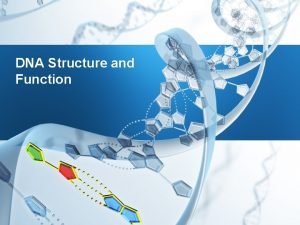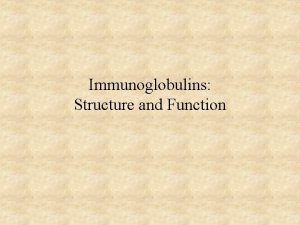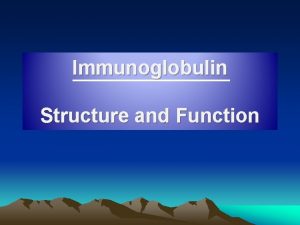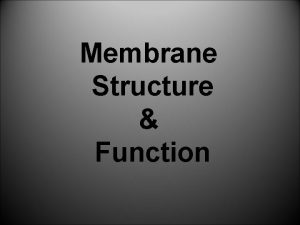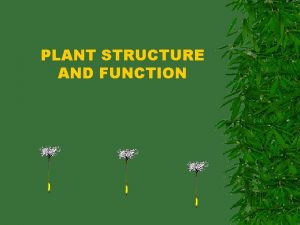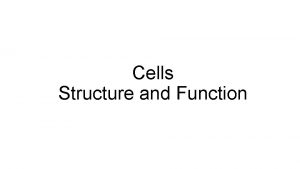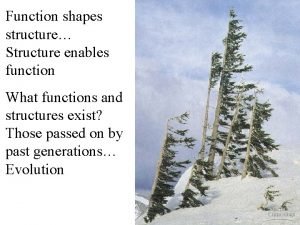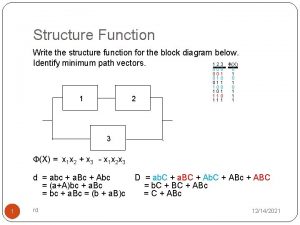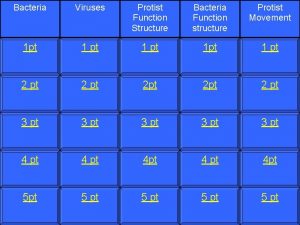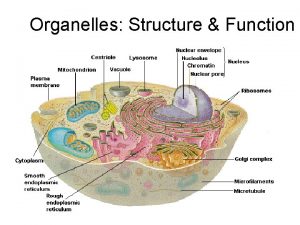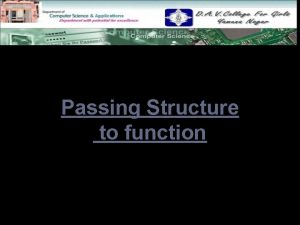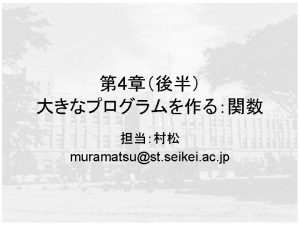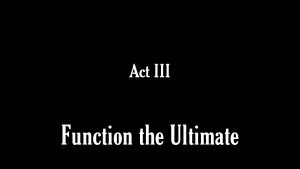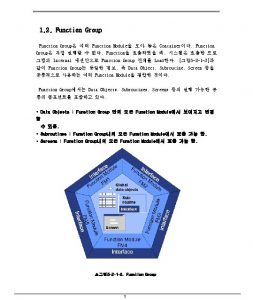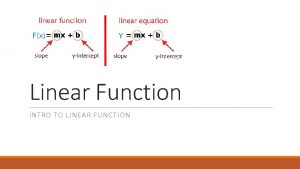Structure and Function Structure and Function in the























- Slides: 23

Structure and Function

Structure and Function in the Origin Structures developed through descent by modification modulated by natural selection. Connects structure with function through adaptation.

Influence of Naturphilosophie • Archetype or Urplan • Development of taxa within the plan Richard Owen 18041892, Britain

Following Origin Determine evolutionary history by morphology • Similarities and differences between existing taxa • Construct phylogenies using paleontology Thomas Henry Huxley 1825 -1895, Britain

Ernst Heinrich Philipp August Haeckel • German naturalist • Expert on Radiolaria • Coined many common terms including Protista, Ecology, Phylogeny, Stem Cell • Developed Darwinism built on Naturphilosophie • Evolutionary Morphology: search for phylogenies based on form and development within structural constraints 1834 -1919, Germany

H. M. S Challenger • Supported, in part, by The Royal Society • Traveled 170, 000 km samples from the surface to the bottom 1872 -1876

Kunst-Formen der Natur • Had been populizer of evolution • Artist and produced 100 plates in the form of Art Nouveau • Common ancestry explained repeated patterns in body plans







Following the rediscovery of Mendel and the discovery of mutations, structural change due to random mutation forming hopeful monsters. Structural constraints not as important.

Theodosius Grygorovych Dobdzansky • Initially, mutationist • Then, began to work on ADH in fruitflies. – Enough natural variation – Natural selection documented in fruitflies 1900 -1975, Russian Empire and USA

From Michael Ruse (2003) Now understand that living things have evolved within multiple constraints (as did Darwin): • Genetic constraints: – Does the gene product(s)? – Size of genome • Historical or phylogenetic constraints • Structural constraints: the task of putting together a functioning organism 1940 -present, USA

Genetic Constraints • Product(s) of the gene – Working product(s) – Pleiotropy • Size of genome – Related to complexity – Can determine size of the cell Rudolf Raff, 1941 - present, USA

Historical Constraints • Developmental constraints; earlier molecular characters fixed in the line – Need not be optimally adaptive – Homologies based on past history – Homeotic genes • Proteins that regulate structural genes • HOX genes (homologs in fruit flies, frogs, fish, mice, and humans) • Relationship between bauplan (urplan) and adaptation – Might be nonadaptive or maladaptive – Reduce importance of function in evolution

Structural Constraints • Many characters are left over or allometric (ex: Irish Elk). • How do new characters form? • Unexpected structures can be co-opted (ex: feathers).

D’Arcy Wentworth Thompson • On Growth and Form (1916) • Form over function • Form determined by physics of the environment (ex: aquatic organisms conform to a waterdrop shape) • Thus, physics trumps adaptation 1860 -1948, Scotland

Radiolarian Evolution, Form and Function • Recognized as unicell with mineralized nested cytoskeleton elements • 2 Major groups: Si. O 2 and Sr. SO 4 • Both have taxa that are bilaterally- or radiallysymmetrical

Structure and Function • Molecular phylogenetics • Molecules have form that is related to function • Confirms relationship Darwinian relationship between form and function thus connecting form to adaptation (natural selection) ML phylogeny based on SSU r. RNA

…natural selection has been invigorated and made healthier precisely because of the new emphasis on form, rather than despite it. -Michael Ruse
 Hát kết hợp bộ gõ cơ thể
Hát kết hợp bộ gõ cơ thể Slidetodoc
Slidetodoc Bổ thể
Bổ thể Tỉ lệ cơ thể trẻ em
Tỉ lệ cơ thể trẻ em Voi kéo gỗ như thế nào
Voi kéo gỗ như thế nào Tư thế worm breton là gì
Tư thế worm breton là gì Chúa sống lại
Chúa sống lại Các môn thể thao bắt đầu bằng tiếng nhảy
Các môn thể thao bắt đầu bằng tiếng nhảy Thế nào là hệ số cao nhất
Thế nào là hệ số cao nhất Các châu lục và đại dương trên thế giới
Các châu lục và đại dương trên thế giới Công thức tính độ biến thiên đông lượng
Công thức tính độ biến thiên đông lượng Trời xanh đây là của chúng ta thể thơ
Trời xanh đây là của chúng ta thể thơ Cách giải mật thư tọa độ
Cách giải mật thư tọa độ Phép trừ bù
Phép trừ bù Phản ứng thế ankan
Phản ứng thế ankan Các châu lục và đại dương trên thế giới
Các châu lục và đại dương trên thế giới Thể thơ truyền thống
Thể thơ truyền thống Quá trình desamine hóa có thể tạo ra
Quá trình desamine hóa có thể tạo ra Một số thể thơ truyền thống
Một số thể thơ truyền thống Cái miệng nó xinh thế chỉ nói điều hay thôi
Cái miệng nó xinh thế chỉ nói điều hay thôi Vẽ hình chiếu vuông góc của vật thể sau
Vẽ hình chiếu vuông góc của vật thể sau Nguyên nhân của sự mỏi cơ sinh 8
Nguyên nhân của sự mỏi cơ sinh 8 đặc điểm cơ thể của người tối cổ
đặc điểm cơ thể của người tối cổ Giọng cùng tên là
Giọng cùng tên là


























